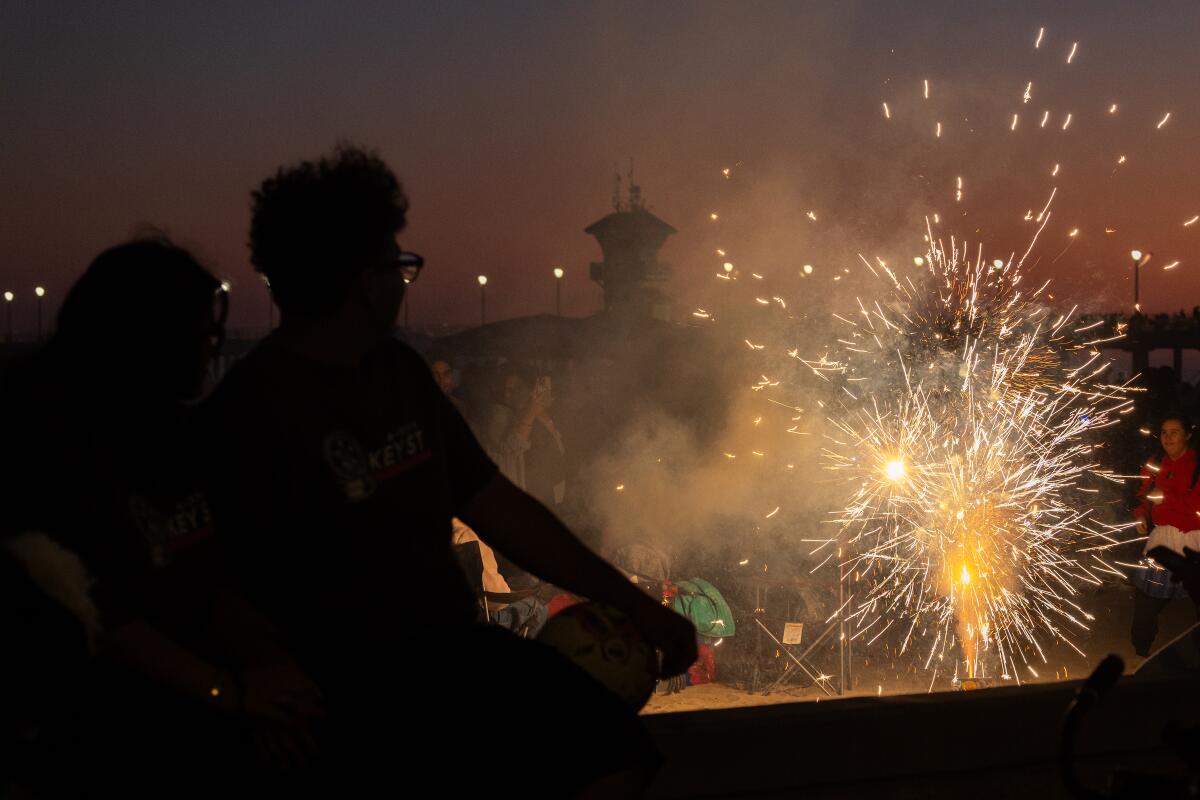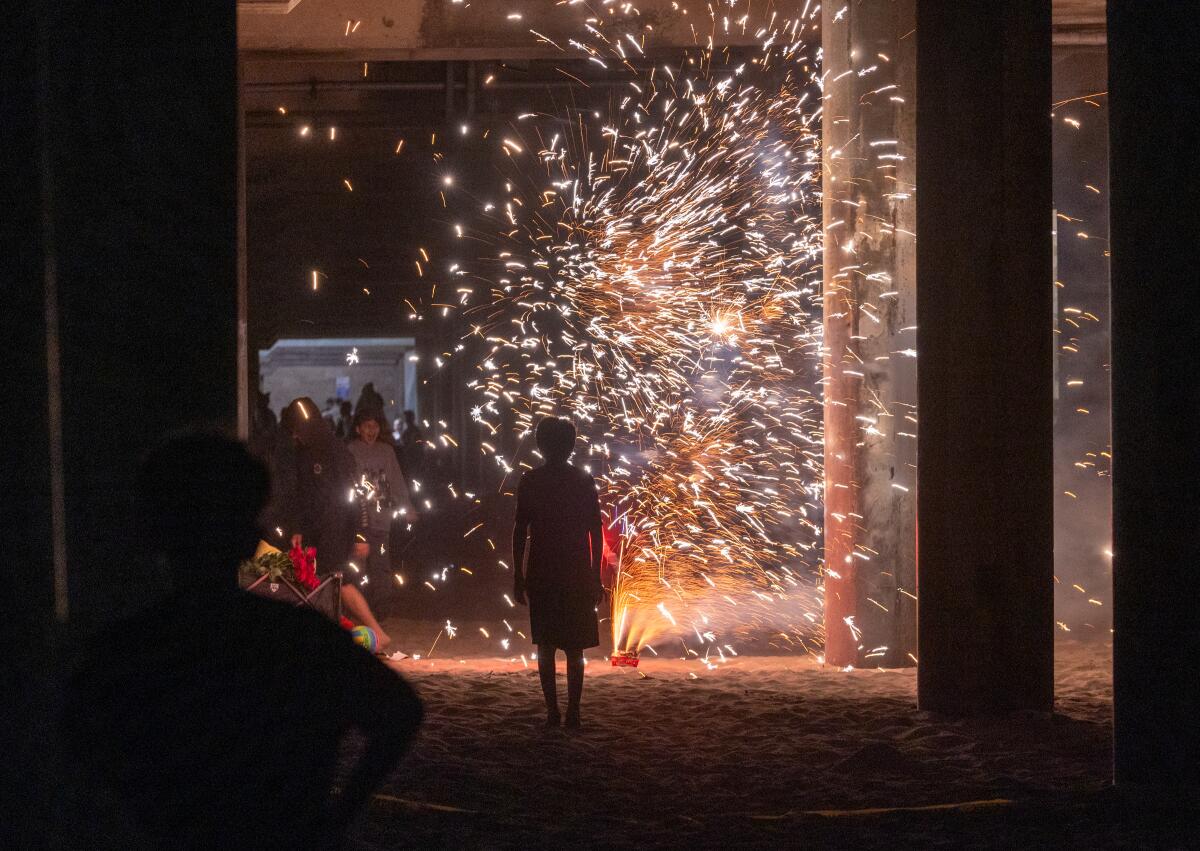Fireworks pollution leads to unhealthy air across Southern California

Those bursts of light and percussive explosions from Fourth of July celebrations large and small left behind enough pollution to turn the air unhealthy throughout parts of Los Angeles and Orange counties, as well as the Inland Empire.
Fireworks emit high levels of particle pollution as well as metal air pollutants, according to the South Coast Air Quality Management District. These pollutants can contribute to negative health effects, especially for vulnerable populations.

District officials say fine particle pollution levels on July 4 and 5 are typically among the highest of the year. Last year’s studies found that locations closer to urban areas generally saw higher concentrations of pollutants, while areas farther away saw little to no pollutants.
The smoke and combustion from fireworks aren’t the only pollutant in the air, as residents of smoggy Southern California know all too well. What’s already floating around are the emissions from cars and refineries.
The South Coast AQMD released an advisory Thursday that’s in effect until midnight Friday, listing the areas with unhealthy air quality.
According to the U.S. Air Quality Index, the “very unhealthy” areas Friday afternoon include Glendora, the San Gabriel Mountains, San Bernardino, Moreno Valley, Yucaipa, Redlands, Riverside and Loma Linda. The Air Quality Index also detailed the list of areas that have unhealthy air quality.
As of Friday afternoon, communities in Los Angeles County with “unhealthy” air quality include:
- Santa Monica
- Beverly Hills
- Parts of Inglewood
- Los Angeles
- Glendale
- Pasadena
- Burbank
- West Covina
- Arcadia
- El Monte
- Pomona
In Orange County, Rancho Santa Margarita was one of the few communities with “unhealthy” air quality.
Communities in Inland Empire with “unhealthy” air quality include:
- Chino Hills
- Ontario
- Rancho Cucamonga
- Fontana
- Santa Ana Mountains
- Lake Elsinore
When the air is unhealthy, experts advise people with heart or lung disease, older adults, children and teens to reduce their risk of exposure by avoiding strenuous outdoor activity and limiting the time they spend outside.
If you plan to stay indoors, health experts suggest closing windows and doors and placing damp rags at the bottom of both to keep outside air from coming in.
Stay cool inside your closed home by running fans or your central air conditioning. If your HVAC system or window air conditioner has a fresh-air option (that is, it pulls air from outside), turn it off and close the intake, or set the system to recirculate.
More to Read
Sign up for Essential California
The most important California stories and recommendations in your inbox every morning.
You may occasionally receive promotional content from the Los Angeles Times.











